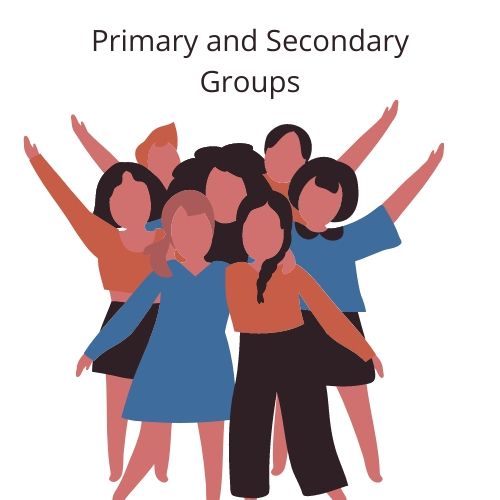The primary and the secondary groups are often the two major bases of distinctions made among the kind of groups, apart from primary and secondary there will be other kinds of groups that exist in the society which we are a part of and which we identify with.

As a part of the society we all live in association with other individuals, these make a part of our world and play various roles in our lives, especially those related to oneself. People often come together to form aggregates, which is nothing but a collection of people. These aggregates become group when they possess various characteristics; typically a group consists of two or more members, these members are usually dependent on one another such that the actions of one may have consequences on the rest of the group, moreover, the members of the group are driven towards certain common goals. Groups provide us with a certain sense of security and moreover with knowledge and information. To a very large extent, the status of the group in a society becomes our status by the virtue of belonging to that group.
A group must be differentiated from a crowd, which often come together with a similar purpose but however are not maintained. There is a sense of belongingness to the group, which helps us identify with the group and as a part of it. Groups make a very large part of our life. We can thus define a group as an organized system of two or more individuals, who are interacting, interdependent, have common motives and values and a set of roles and norms that regulate the behavior of its members.
Groups may be of various types starting from primary, secondary, to reference groups; these are groups apart from our own to which we compare our group too, further they may be formal or informal, depending on the setting in which they come to exist. A major distinction is however made between primary groups and secondary groups.
Primary groups refer to those social groups which are closely knit, the members of this group are close, in proximity as well as an emotional bond these groups are cohesive, which implies that the member of the primary group have a mutual sense of affection for one another, there is a strong feeling of belongingness to the group. They are often characterized by face-to-face interaction, which is informal and relatively permanent. These groups include one’s family, friends, peer group, love relationships, etc. These groups often form the prime source of socialization for the individual, as one’s family group will be the first set of individuals that people interact with. They learn their values, norms, and ways of behaving from this group. E.g. we learn the most basic ways of behaving from our families, they teach us how to eat, a proper way to sit, how to talk to those elder to us, the norms of the society, etc. Primary groups help in the development of an individual’s personality and are the source of intimate interaction for the person. The primary group is often characterized by a ‘we’ feeling, denoting the intimacy and the feeling of belongingness.
The concept of primary groups was given by Charles Horton Cooley, he has given the distinction between primary and secondary groups even though he has never exclusively used the term ‘secondary group’.
A secondary group is often characterized by less personal and intimate interactions among the members, these groups are often more goal-oriented and come together for a purpose. They are in many ways the opposite of primary groups, especially in terms of the organization, which is more formal and impersonal. One can see as an example of a secondary group as typically their workgroup, here there is a formal organization where the roles of the member are already laid out and they are expected to function and behave according to their roles. Workplaces usually consist of a large number of people who come together for the fulfilment of common work goals. Thus they are less personal and intimate. In contrast to the primary groups, the members of the second group have the option to leave or join a group, the situation in a primary group is different in the sense that people do not have the choice to choose its members. e.g. one cannot choose the family that they are born into, they are a part of it by the virtue of birth. However, the organization one wishes to work in and the role and responsibilities that one wishes to take on can be chosen by the person taking them on. These are groups that are formed deliberately and consciously. Thus while the membership into a particular caste may by birth and thus not deliberate, the formation of a political party by the members of a caste group is more deliberate and forms a secondary group.
The primary and the secondary groups are often the two major bases of distinctions made among the kind of groups, apart from primary and secondary there will be other kinds of groups that exist in the society which we are a part of and which we identify with. Groups thus are an inevitable part of our life since the very day we are born, even before we are able to make decisions we are made the part of a group, with or without our choice. We find that both primary and secondary groups cover a large number of characteristics of the other groups that we are a part of.
